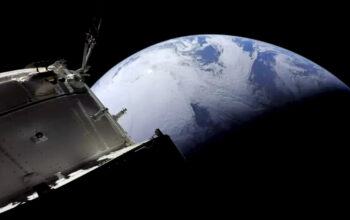Keep your eyes on the skies, stargazers: NASA has predicted that the much-anticipated “once-in-a-life-time” star explosion — or nova — will be visible to the naked eye sometime this summer, per a recent press release.
“It’s incredibly exciting to have this front-row seat,” said Dr. Rebekah Hounsell, an assistant research scientist at NASA’s Goddard Space Flight Center in Greenbelt, Maryland.
Dubbed T Coronae Borealis or the “Blaze Star,” the celestial event is located 3,000 light years away and is comprised of a white dwarf, an “Earth-sized” remnant of a dead star. The starburst’s mass, meanwhile, is similar to that of the Sun.
When enough hydrogen from the red giant accumulates on the surface of the white dwarf, it triggers a massive thermonuclear explosion that blasts the amassed material into space in a blinding flash. The intergalactic phenomenon is not to be confused with a supernova, a similarly cosmic combustion that destroys some dying stars — rather than keeping them intact like the nova — and is often billions of times brighter than a nova.
In the case of the Blaze Star, that event appears to reoccur, on average, every 80 years, and can repeat itself for hundreds of thousands of years.
This event is particularly significant given its relative proximity to Earth. “There are a few recurrent novae with very short cycles, but typically, we don’t often see a repeated outburst in a human lifetime, and rarely one so relatively close to our own system,” said Hounsell.
















